 Moving from the window sill to the greenhouse, seedlings often makes us get nervous - it is too big stress and for her, and for the dachank. However, there is a way to avoid annual problems and unrest. We read carefully.
Moving from the window sill to the greenhouse, seedlings often makes us get nervous - it is too big stress and for her, and for the dachank. However, there is a way to avoid annual problems and unrest. We read carefully.
The sowing season began, and I would like to tell me how I crush the seedlings for my greenhouses. I will make a reservation immediately, I do not need to harden it, because the greenhouses are heated. Especially since Our Siberian conditions: without the creation of a microclimate it is not possible to grow a good crop.
 The temperature of the soil and air in the greenhouses; It is supported approximately to the familiar conditions for plants (as in the homeland), even if we have in Siberia in April night. 20 ° frost. Thus, it disappears the need to drag the seedlings from place to place in order to temper it. I will not describe how the seeds do riff out what kind of seedlings are preparing, this is already said in dozens of rooms. And I'll tell you just how I grow it without spending a lot of time and place. Sometimes I tried many options for growing seedlings in the cramped housing.
The temperature of the soil and air in the greenhouses; It is supported approximately to the familiar conditions for plants (as in the homeland), even if we have in Siberia in April night. 20 ° frost. Thus, it disappears the need to drag the seedlings from place to place in order to temper it. I will not describe how the seeds do riff out what kind of seedlings are preparing, this is already said in dozens of rooms. And I'll tell you just how I grow it without spending a lot of time and place. Sometimes I tried many options for growing seedlings in the cramped housing.
 The method of which I will tell, I use for more than 25 years. All the seedlings of tomatoes, peppers and eggplant sowing in mid-February. In a small in height, the box (10 cm) with dimensions 130 × 30 cm. A third occupies a box with small cells in which sowing peppers and eggplants. I set it in one end of the box, and the remaining part fill in the ground by 5-6 cm. Since the volumes you and peppers spare at different speeds, peppers are in a removable box. Depending on the number of tomato varieties in the box, we make partitions from a solid film. Prepared seeds corresponding to the mouth sowing into the seeds, I put tags with the title (photo 1).
The method of which I will tell, I use for more than 25 years. All the seedlings of tomatoes, peppers and eggplant sowing in mid-February. In a small in height, the box (10 cm) with dimensions 130 × 30 cm. A third occupies a box with small cells in which sowing peppers and eggplants. I set it in one end of the box, and the remaining part fill in the ground by 5-6 cm. Since the volumes you and peppers spare at different speeds, peppers are in a removable box. Depending on the number of tomato varieties in the box, we make partitions from a solid film. Prepared seeds corresponding to the mouth sowing into the seeds, I put tags with the title (photo 1).
 Seed sowing more than necessary for landing. This allows you to pick stronger plants when picking. When I sowed everything, I fall asleep by their thin layer of land 0.5-1 cm. From a plastic bottle with fine holes in a traffic jam, without eroding the soil, shedding the whole box. I cover it with a thin film and install the battery on the table. After 3-4 days, the seeds of tomatoes begin to slander.
Seed sowing more than necessary for landing. This allows you to pick stronger plants when picking. When I sowed everything, I fall asleep by their thin layer of land 0.5-1 cm. From a plastic bottle with fine holes in a traffic jam, without eroding the soil, shedding the whole box. I cover it with a thin film and install the battery on the table. After 3-4 days, the seeds of tomatoes begin to slander.
 I remove the film from them, leaving it on peppers and eggplants (photo 2). At the end of the box there are holes in which two rails are vertically inserted, which fix the screen with daylight lamps. Since our days are short, and even the window from the north side, seedlings are heated for 12-16 hours. The lamps constantly hold on the seedliness at a distance of 5 cm. As the lamp rise is raised. In this way, the seedlings of Razha to two or three real leaves. As peppers and eggplant germinate, I remove the film, and they continue to grow under these same lamps (photo 3).
I remove the film from them, leaving it on peppers and eggplants (photo 2). At the end of the box there are holes in which two rails are vertically inserted, which fix the screen with daylight lamps. Since our days are short, and even the window from the north side, seedlings are heated for 12-16 hours. The lamps constantly hold on the seedliness at a distance of 5 cm. As the lamp rise is raised. In this way, the seedlings of Razha to two or three real leaves. As peppers and eggplant germinate, I remove the film, and they continue to grow under these same lamps (photo 3).
 When the plants reach a height of 5 cm, I start the pickup. I take the same in the size of the box, only with a height of 15 cm, fill it on 3/4 soil and starting to transplant the selected one - the most severe seedlings. In the photo 4 seedlings for the first transplant. I read that it does not recommend landing obliquely or lying. And I begin to raise the seedlings to learn, you can say, "from the diaper" (photo 5, b). Starting from the first diver, then from the second and so before landing on the bed. This method allows you to grow powerful plants with a strong root system. When landing into the ground, they are without a pause begin to grow and soon bloom.
When the plants reach a height of 5 cm, I start the pickup. I take the same in the size of the box, only with a height of 15 cm, fill it on 3/4 soil and starting to transplant the selected one - the most severe seedlings. In the photo 4 seedlings for the first transplant. I read that it does not recommend landing obliquely or lying. And I begin to raise the seedlings to learn, you can say, "from the diaper" (photo 5, b). Starting from the first diver, then from the second and so before landing on the bed. This method allows you to grow powerful plants with a strong root system. When landing into the ground, they are without a pause begin to grow and soon bloom.
 From one edge of the drawer, I make a groove to the bottom with a slope of one side at 45 °. From a bottle with holes, gently shed it and lay 5-8 bush in it. Moching at the bottom of the root, I close them with a wide bunch of 1-1.5 lanes from the same box. The groove is shifted, and I work with it, as with the previous one, until the box is filled. Seedlings pick with a reserve.
From one edge of the drawer, I make a groove to the bottom with a slope of one side at 45 °. From a bottle with holes, gently shed it and lay 5-8 bush in it. Moching at the bottom of the root, I close them with a wide bunch of 1-1.5 lanes from the same box. The groove is shifted, and I work with it, as with the previous one, until the box is filled. Seedlings pick with a reserve.
 To determine the varieties on paper Cherka drawer plan. After transplanting suspended the same lamps, and seedlings are growing for another 12-16 days (photo 7.8). Suitable time of the second dive (photo 9). I begin to cook soil and drawers in advance (photo 10,11). Since in the middle of March there is still a cold, the soil has to be prepared from autumn. For the second dive, special boxes are made, in which seedlings are located in one row of 10-11 bushes. There are 14 such boxes for seedlings 14 pieces, in - Tomatoes, in 4 peppers and in one eggplant. 12x15x130 cm box size, inside covered with tightness film. From the ends there are devices for installing vertical plates. In them, as the plants grow, horizontally rakes are inserted to which they are tested. This is done because seedlings grows almost to a meter. If it is not forbidden, it will be extremely inconvenient.
To determine the varieties on paper Cherka drawer plan. After transplanting suspended the same lamps, and seedlings are growing for another 12-16 days (photo 7.8). Suitable time of the second dive (photo 9). I begin to cook soil and drawers in advance (photo 10,11). Since in the middle of March there is still a cold, the soil has to be prepared from autumn. For the second dive, special boxes are made, in which seedlings are located in one row of 10-11 bushes. There are 14 such boxes for seedlings 14 pieces, in - Tomatoes, in 4 peppers and in one eggplant. 12x15x130 cm box size, inside covered with tightness film. From the ends there are devices for installing vertical plates. In them, as the plants grow, horizontally rakes are inserted to which they are tested. This is done because seedlings grows almost to a meter. If it is not forbidden, it will be extremely inconvenient.
From the hard film of the width of 20 crumpled cups, 10-12 pieces, in which the ground is 3-5 cm. Selected plants for transplantation I install the roots to the bottom of the cup on the pre-moistened soil. The cup put in the box so that the stalk plant "watched" on the wall of the box (photo 12). When filling out a glass of earth, holding the stalk vertically, near the centimeter from the edge of the glass. Filled and shed water. In this way, all seedlings are peeing. Here again about half of the stem closes the land, and it will give extra roots in the process of growth. The location of the seedling stems at the edge of the drawer allows it to easily water. After all, the boxes are long, and in this case you can easily cover between the stalks watering watering (photo 13).
Peppers and eggplants have grown up to this term. In the same cups, I smell the soil to half, I remove the seedlings from the cells, landing into the glasses and fill their land. When everything has already been transplanted, over the seedle hanging 8 LD lamps with one common reflector. The constant proximity of the lamps to the seedlings does not allow it to be very pulled out, and it is a bit heated. In March, the sun is already beginning to warm well through the windows, reflector raise the day, opening the access of the sun to the plants. These procedures continue until the first inflorescences on tomatoes appear (photo 14).
At the end of March - early April in the greenhouse already happens without heating to 20 °: you can prepare seedlings to the transfer. In warm days, when the street is not lower than zero, we transfer the seedlings to the greenhouse and at night slightly impoverish, and if in the future cloudy and cold, then heating is around the clock. During the week, seedlings get used to (photo 15), adapts to natural sunlight, and until the autumn on the lighting in the greenhouse I do not spend a penny. Seedlings during this time got acquainted and ready for landing. Over the entire length of the box (they are in place in me)
earth is unloading to the edges. Decade from the rails, pre-clog the bottom leaves (photo 16, 17), leaving 2-3 sheets before the first brush. I have a seedlings in a chess order (photo 18). Under whom with roots I make a deepening and put a label near each coma - a little peg. I fall asleep all these stems and roots with a thin layer of compost or humoring (photo 19).
Tags serve as a landmark where the main root is located, for its reinforced watering for 6-10 days, and the sprinkled stems are only slightly moisturizing. A small blowjob and fertile soil favorably affect the formation of roots throughout the stalk. The tops of the seedlings are raised on the second day and begin to grow actively, because the main root is powerful and no damage (photo 20), and after 6-10 days new roots are beginning to form on the sprinkled stems. Already three days later, the stems from the sides of little glance, there are grounds of the earth and in 10 days I align the bed. Intensive watering at the labels I spend ten days and increase watering across the area. A week later, seedlings begins to bloom actively, and marks appear (photo 21.22).
In the photo 23 tomatoes in early July. This is the result of a unique technology for the simplicity of technology that is pleasing to us with high yields for many years (photo 24).
V. Colbin, Source Magazine "My Lovely Dacha"


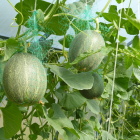
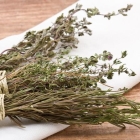
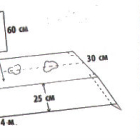
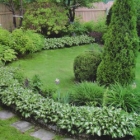
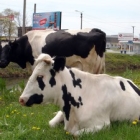
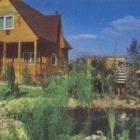
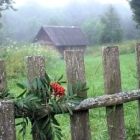

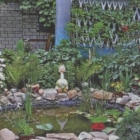
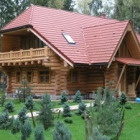
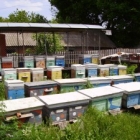
Does anyone know that the seedlings need to "scare", in order for it to be strong, thick and tempered?
I heard this advice for a long time ago in some transmission about the garden and the garden and first did not give it values. The fright is that when you come to the seedlings, you need to touch it with your hands and make such detachable movements, as if we go to rip it.
Do not believe? And try. You will be surprised by your seedlings!
How to place tomatoes in greenhouse for growth?
In the middle of the greenhouse, where you have a bed of 40 cm, plant tall tomatoes, in the future growing stems directed horizontally on the wire or a grind. Form 1-2 stems, as the fruit ripens, remove the leaves, only gradually so that the plant cannot be stressed. In August, plants will have a semi-digit stem with the brushes of constructive tomatoes, arranged horizontally, the branches grow. Some direse left, others - to the right, attaching a loose knot after 30-40 cm.
In two other beds closer to the wall, lay down the lowest tomatoes. These tomatoes will replicate earlier than tall. As the fruit ripens, brutged the bushes carefully, remove the secateur so as not to break the roots of other plants. Do not thicken the greenhouse, remove the stalks on which there are no fruits.
Caring for tomatoes, do not be afraid to shake the bushes - you pollinate them. Crickerels definitely stitches with slate plates. Over time, they will become higher, you will be easier to settle behind plants. Put sawdust or straw in the passages - excessive dampness will only damage the plants.
Closer to the track put tall tomatoes. As they care for them, I described above.
Tomatoam does not need pollinators, they are self-polls. And they are even useful to shook them, - the umbrellas will be much more. It is better to do it in the morning, just take a hand for the middle part of the stem and shake slightly. Do it with all bushes in a greenhouse or on the ridge. Remove the result.